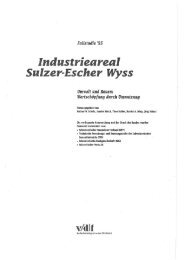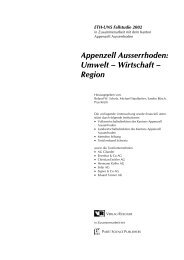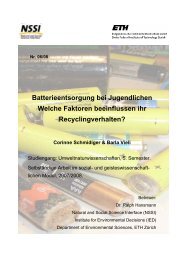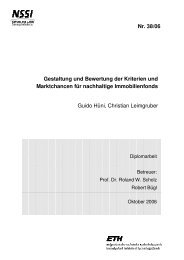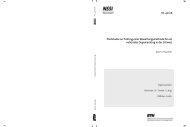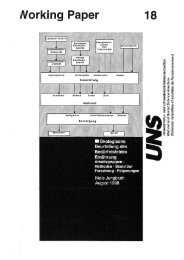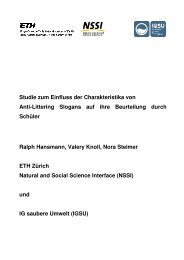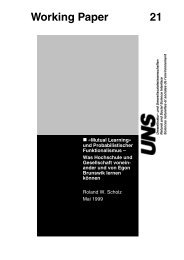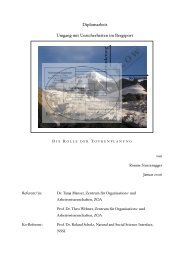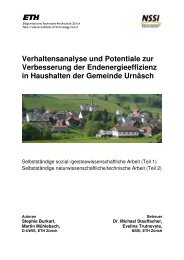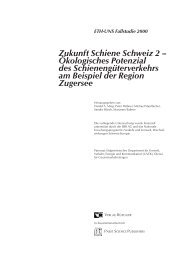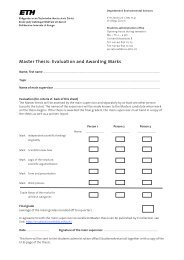Non-road fuel consumption and pollutant emissions ... - BAFU - CH
Non-road fuel consumption and pollutant emissions ... - BAFU - CH
Non-road fuel consumption and pollutant emissions ... - BAFU - CH
You also want an ePaper? Increase the reach of your titles
YUMPU automatically turns print PDFs into web optimized ePapers that Google loves.
<strong>Non</strong>-<strong>road</strong> <strong>fuel</strong> <strong>consumption</strong> <strong>and</strong> <strong>pollutant</strong> <strong>emissions</strong> FOEN 2008 96<br />
8.7.2 Emissions<br />
Railway vehicles have a relatively lengthy service life, <strong>and</strong> their average age is therefore<br />
fairly high. This means that the specific <strong>emissions</strong> of diesel locomotives are<br />
disproportionately high. Railway vehicles produce comparatively high levels of nitrogen<br />
oxides (630 tonnes p.a.).<br />
The calculation model assumed that a fairly high proportion of railway vehicles have<br />
been retrofitted with particle filters. The level of PM <strong>emissions</strong> (23 tonnes p.a.) is<br />
comparatively low (Fig. 49, top). The emission factor for railway vehicles is approximately<br />
2.0 grams of PM per kilogram of <strong>fuel</strong>, whereas the factor for ships, for example,<br />
is 3.0 grams per kg of <strong>fuel</strong>.<br />
Development of <strong>pollutant</strong> <strong>emissions</strong> from 1980 to 2020<br />
The level of PM <strong>emissions</strong> will decrease significantly over the next few years thanks to<br />
the continued retrofitting of older machines with particle filters (Fig. 49, bottom). In<br />
the period from 2005 to 2020, nitrogen oxide <strong>emissions</strong> are expected to fall by around<br />
50%.



